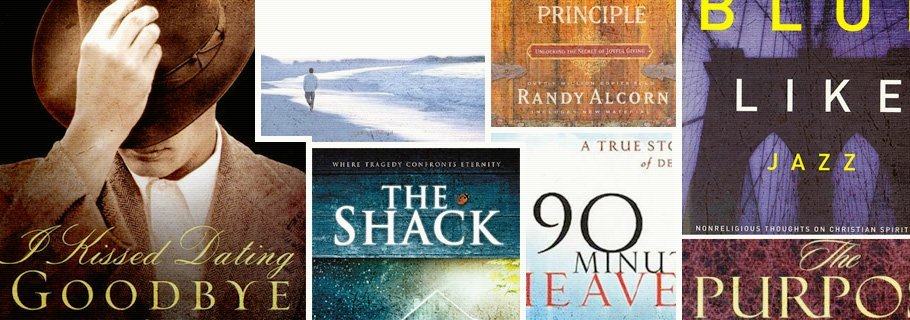Some time ago I began a series called “The Bestsellers” and am picking it up again after a hiatus. In this series I look at the history and impact of some of the Christian books that have sold more than a million copies—no small feat when the average Christian book sells only a few thousand. We have already encountered books by a cast of characters ranging from Joshua Harris and Randy Alcorn all the way to Joel Osteen, Bruce Wilkinson, and William Young. Today we continue the series by looking at a book that has become a perennial fixture on the bestseller lists and one of only a handful of Christian books to top the ten million mark.
The 5 Love Languages by Gary Chapman
Gary Demonte Chapman was born on January 10, 1938. A graduate of Moody Bible Institute, Wheaton College, and Southwestern Baptist Theological Seminary, he went on to become a pastor, a counselor, the director of Marriage and Family Life Consultants, and the host of a radio program devoted to relationships and marriage.
In 1971 Chapman joined the staff of Calvary Baptist Church in Winston-Salem, North Carolina. Even as a young pastor he had a heart for marriage and family and began to host seminars for couples. Naturally, many of the people he taught approached him to ask for help with their marriage conflicts. He met with many of these couples and over time came to see that a common root cause of their conflict was poor communication that left one or both spouses feeling unloved. “Adults all have a love tank,” he says. “If you feel loved by your spouse, the whole world is right. If the love tank is empty, the whole world can begin to look dark.” Different people have this love tank filled in different ways, he observed, and he came to describe these as “love languages.” He encouraged spouses to learn their partners’ love language and then to deliberately display their love in that way. What he taught in his church formed the basis for his 1992 book The 5 Love Languages.
The heart of the book is a description of the five common languages people use to express love: affirming words, gift-giving, physical touch, quality time, and acts of service. Each person has tendencies toward some of these languages and away from others. And, indeed, most of us can look at the list and quickly put them in order of personal preference. The key application is that each person needs to understand his or her spouse’s love language and then learn to show love in that way. It is implied that the spouse will reciprocate and a happy marriage will ensue—the communication mismatch that lies at the heart of so much conflict will be resolved.

Sales & Lasting Impact
The 5 Love Languages was released by Moody Publishers in 1992 and immediately exceeded the publisher’s modest expectations. Remarkably, for 19 of its first 20 years it would outsell its total from the previous year. In 1998 it surpassed 500,000 copies sold, just two years later surpassed 1 million, and in 2015, after selling its 10 millionth copy, received the Diamond Award from the Evangelical Christian Booksellers Association. Twenty-four years after its publication date, the book remains at the top of the New York Times Love and Relationships list of bestsellers and is fixed at number 2 overall on the ECPA list, bested only by Jesus Calling. It has been translated into 50 languages.
While The 5 Love Languages has proven undeniably helpful to many struggling couples, it has not been without its critiques. The most notable of these is expressed by David Powlison in a 2002 edition of The Journal of Biblical Counseling. Powlison explains that “Part of considering the interests of others is to do them tangible good. But then to really love them, you usually need to help them see their itch as idolatrous, and to awaken in them a far more serious itch! That’s basic Christianity. 5LL will never teach you to love at this deeper, more life-and-death level.” In other words, the book subtly teaches that the desires we feel within are legitimate needs even though they may actually be idolatrous lusts.
“The 5 Love Languages replaces naked self-interest with civilized self-interest. ‘I give, hoping to get.’”
A second critique is that “Chapman’s model is premised on a give-to-get economy: ‘I will give to fill your love tank. But in the back of my mind I’m always considering whether and when I’ll get my own tank filled.” In Powlison’s words, “The 5 Love Languages replaces naked self-interest with civilized self-interest. ‘I give, hoping to get.’” The love languages can mask a kind of selfishness that is the very opposite to the Bible’s selfless love.
Those critiques lead to this one: “The love language model does not highlight those exquisite forms of love that do not ‘speak your language.’ … The greatest love ever shown does not speak the instinctively self-centered language of the recipients of such love.” The saving love of God, expressed in the death of Christ, does not speak anyone’s natural love language. And yet it is the greatest love and our most desperate need. In this way Christ fails the love language test! We wanted to be loved in all sorts of ways—but none of us wanted to be loved in the way Christ has loved us, by dying for us, sending his Spirit to indwell us, and being Lord over us. And yet this is what we needed more than anything in all the world.
These critiques do not render the book or its “love languages” terminology invalid, but they do demand that we approach it with care and discernment.
Since the Award
The overwhelming success of The 5 Love Languages begat an entire industry of related material including God Speaks Your Love Language, The 5 Love Languages for Men, The 5 Love Languages of Teenagers, The 5 Languages of Appreciation in the Workplace, The Love Languages Devotional Bible, The 5 Love Languages of Children (which has surpassed 500,000 copies sold), and many others. Chapman hosts a daily radio spot called A Love Language Minute and regularly hosts marriage conferences and seminars. He remains Senior Associate Pastor at Calvary Baptist Church.
A Personal Perspective
I find the love language terminology helpful and use it quite often. Aileen and I are sure to bring it up in pre-marriage counseling and in one session have the engaged couple place the languages in order of their preference. They also try to guess the preferences of their future spouse and compare their results. We are confident that this helps them better understand how to communicate their love for one another. However, we always make sure to provide the caveats Powlison expresses. Not only that, but we turn it all the way around to help them understand that they need to learn to receive love in their spouse’s language. It is more important for a husband to learn to receive love as his wife gives it than to demand that she learns to offer love in the way he wants to receive it. This, I think, is the book’s most important lesson.
Sources: Wikipedia, New York Times, 5 Love Languages, Journal of Biblical Counseling.










